 W
WThe Battle of Aquae Sextiae (Aix-en-Provence) took place in 102 BC. After a string of Roman defeats, the Romans under Gaius Marius finally defeated the Teutones and Ambrones. The Teutones and the Ambrones were virtually wiped out, with the Romans claiming to have killed 200,000 and captured 90,000, including large numbers of women and children who were later sold into slavery. Some of the surviving captives are reported to have been among the rebelling gladiators in the Third Servile War. Local lore associates the name of the mountain, Mont St. Victoire, with the Roman victory at the battle of Aquae Sextiae, but Frédéric Mistral and other scholars have debunked this theory.
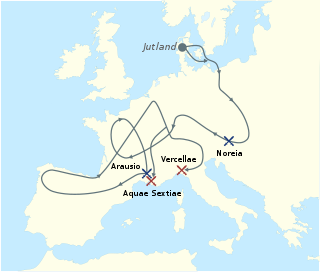 W
WThe Battle of Arausio took place on 6 October 105 BC, at a site between the town of Arausio, and the Rhône River. Ranged against the migratory tribes of the Cimbri under Boiorix and the Teutoni under Teutobod were two Roman armies, commanded by the proconsul Quintus Servilius Caepio and consul Gnaeus Mallius Maximus. However, bitter differences between the commanders prevented the Roman armies from co-operating, with devastating results. The terrible defeat gave Gaius Marius the opportunity to come to the fore and make radical reforms to the organisation and the recruitment of Roman legions. Roman losses are described as being up to 80,000 troops as well as another 40,000 auxiliary troops (allies) and servants and camp follower, virtually all of their participants in the battle. In terms of losses, the battle is regarded as one of the worst defeats in the history of ancient Rome.
 W
WThe Battle of Arbalo was a fight between the Romans and the Germanii in 11 B.C. It was part of the Drusus Campaigns
 W
WThe Battle of Burdigala was a battle of the Cimbrian War that occurred in the year 107 BC. The battle was fought between a combined Germanic-Celtic army including the Helvetian Tigurini under the command of Divico, and the forces of the Roman Republic under the command of Lucius Cassius Longinus, Lucius Caesoninus, and Gaius Popillius Laenas. Longinus and Caesoninus were killed in the action and the battle resulted in a victory for the combined tribes.
 W
WThe Battle of the Catalaunian Plains, also called the Battle of the Campus Mauriacus, Battle of Châlons, Battle of Troyes or the Battle of Maurica, took place on June 20, 451 AD, between a coalition led by the Roman general Flavius Aetius and the Visigothic king Theodoric I against the Huns and their vassals commanded by their king Attila. It was one of the last major military operations of the Western Roman Empire, although Germanic foederati composed the majority of the coalition army. Whether the battle was strategically conclusive is disputed: the Romans possibly stopped the Huns' attempt to establish vassals in Roman Gaul. However, the Huns successfully looted and pillaged much of Gaul and crippled the military capacity of the Romans and Visigoths. Attila died only two years later and his Hunnic Empire was dismantled by a coalition of their Germanic vassals after the Battle of Nedao in 454.
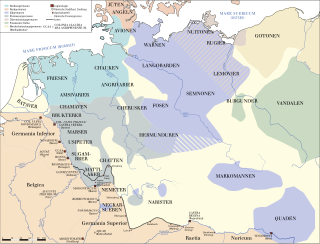 W
WThe early Imperial campaigns in Germania were a series of conflicts between the Germanic tribes and the Roman Empire. Tensions between the Germanic tribes and the Romans began as early as 17 BC with Clades Lolliana, where the 5th Legion under Marcus Lollius was defeated by the tribes Sugambri, Usipetes, and Tencteri. Rome's emperor Augustus responded by rapidly developing military infrastructure across Gaul. His general, Nero Claudius Drusus, began building forts along the Rhine in 13 BC and launched a retaliatory campaign across the Rhine in 12 BC.
 W
WThe Battle of Fano, also known as the Battle of Fanum Fortunae, was fought in 271 between the Roman Empire and the Juthungi. The Romans were led by Emperor Aurelian, and they were victorious.
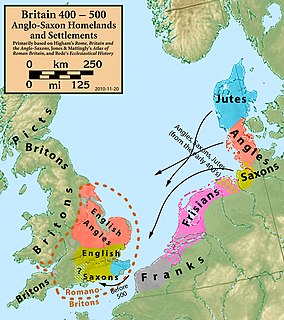 W
WThe Battle of Finnsburg was a conflict in the Germanic heroic age between Frisians with a possible Jutish contingent, and a primarily Danish party. Described only in later Anglo-Saxon poetry, if the conflict had an historical basis it most likely occurred around 450 AD.
 W
WThe Battle of the Frigidus, also called the Battle of the Frigid River, was fought between 5–6 September 394, between the army of the Eastern Emperor Theodosius I and the army of Western Roman ruler Eugenius in the eastern border of Regio X in Roman Italia.
 W
WThe Battle at the Harzhorn took place in the early 3rd century between Germanic and Roman troops near the Harzhorn hill between the towns of Kalefeld and Bad Gandersheim, in the state of Lower Saxony, Germany.
 W
WThe Battle of Idistaviso, sometimes known as a first Battle of Minden or Battle of the Weser River, was fought in 16 AD between Roman legions commanded by Roman emperor Tiberius' heir and adopted son Germanicus, and an alliance of Germanic peoples commanded by Arminius. The battle marked the end of a three-year series of campaigns by Germanicus in Germania.
 W
WThe Battle of the Nervasos Mountains occurred in the year 419 and was fought between a coalition of Suebi, led by King Hermeric together with allied Roman Imperial forces stationed in the Province of Hispania, against the combined forces of the Vandals and Alans who were led by their King Gunderic. This battle occurred in the context of a contemporary Germanic invasion of the Iberian Peninsula. The battle took place in what is today the Province of León, Spain, and resulted in a Roman/Suebian Victory.
 W
WThe Battle of Noreia, in 113 BC, was the opening battle of the Cimbrian War fought between the Roman Republic and the migrating Proto-Germanic tribes, the Cimbri and the Teutons (Teutones). It ended in defeat, and near disaster, for the Romans.
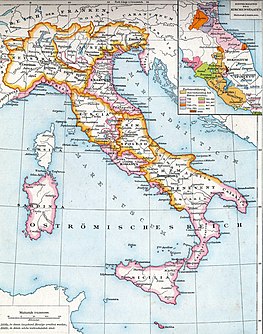 W
WThe Lombards or Langobards were a Germanic people who ruled most of the Italian Peninsula from 568 to 774.
 W
WThe Battle of Ticinum, or Battle of Pavia, was fought in 271 near Ticinum (Pavia) in Italy, and resulted in the Roman Emperor Aurelian destroying the retreating Juthungi army.
 W
WThe Battle of Placentia was fought in 271 between a Roman army led by Emperor Aurelian and the Juthungi tribe, near modern Piacenza.
 W
WThe Battle at Pontes Longi was fought near Bramsche, Germany in 15 AD between the Roman general Aulus Caecina Severus and an alliance of Germanic peoples commanded by Arminius. It was part of a three-year series of campaigns by Germanicus in Germania. The battle was inconclusive.
 W
WThe Battle of Ravenna, capital of the Western Roman Empire, between the Heruli under their King Odoacer and the remnants of the Western Roman Army in Roman Italy occurred in early September 476. The Roman Empire had been in relative decline since the beginning of the barbarian invasions and Rome, the symbolical heart and largest city of the Western Empire, was sacked in 410 by the Visigoths and in 455 by the Vandals. By 476 the Roman Emperor was little more than a puppet, having very little de facto control of any territory outside of Italy. The last Roman emperor, Romulus Augustulus, was not recognized as a legitimate ruler outside of Italy; the Eastern Roman Empire recognized Julius Nepos as the true Western Roman Emperor.
 W
WThe Battle of Roncevaux Pass in 778 saw a large force of Basques ambush a part of Charlemagne's army in Roncevaux Pass, a high mountain pass in the Pyrenees on the present border between France and Spain, after his invasion of the Iberian Peninsula.
 W
WThe Battle of the Sabis, also known as the Battle of the Sambre or the Battle against the Nervians, was fought in 57 BC near modern Saulzoir in Northern France, between Caesar's legions and an association of Belgae tribes, principally the Nervii. Julius Caesar, commanding the Roman forces, was surprised and nearly defeated. According to Caesar's report, a combination of determined defence, skilled generalship, and the timely arrival of reinforcements allowed the Romans to turn a strategic defeat into a tactical victory. Few primary sources describe the battle in detail, with most information coming from Caesar's own report on the battle from his book, Commentarii de Bello Gallico. Little is therefore known about the Nervii perspective on the battle.
 W
WThe Battle of Soissons was fought in 486 between Frankish forces under Clovis I and the Gallo-Roman domain of Soissons under Syagrius. The battle was a victory for the Franks, and led to the conquest of the Roman rump state of Soissons, a milestone for the Franks in their attempt to establish themselves as a major regional power.
 W
WThe Battle of the Teutoburg Forest, described as the Varian Disaster by Roman historians, took place in the Teutoburg Forest in 9 CE, when an alliance of Germanic peoples ambushed and destroyed three Roman legions and their auxiliaries, led by Publius Quinctilius Varus. The alliance was led by Arminius, a Germanic officer of Varus's auxilia. Arminius had acquired Roman citizenship and had received a Roman military education, which enabled him to deceive the Roman commander methodically and anticipate the Roman army's tactical responses.
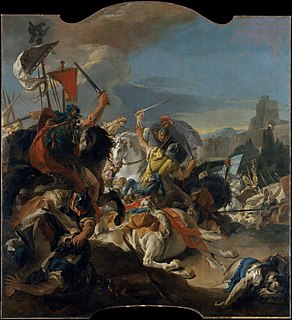 W
WThe Battle of Vercellae, or Battle of the Raudine Plain, was fought on 30 July 101 BC on a plain near Vercellae in Gallia Cisalpina. A Germanic-Celtic confederation under the command of the Cimbric king Boiorix was defeated by a Roman army under the joint command of the consul Gaius Marius and the proconsul Quintus Lutatius Catulus. The battle marked the end of the Germanic threat to the Roman Republic.
 W
WThe Battle of Vosges, also referred to as the Battle of Vesontio, was fought in 58 BC between the Germanic tribe of the Suebi, under the leadership of Ariovistus, and six Roman legions under the command of Gaius Julius Caesar. This encounter is the third major battle of the Gallic Wars. Germanic tribes crossed the Rhine, seeking a home in Gaul.